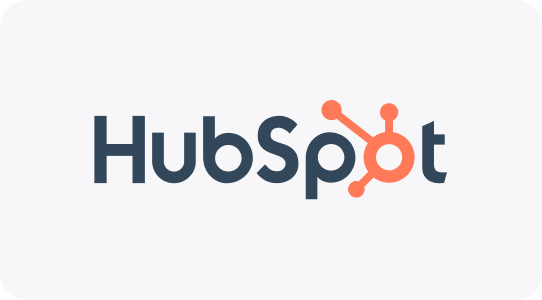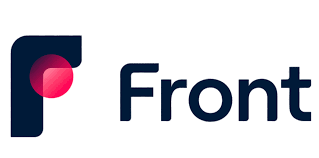Beyond Shared Mailboxes: Top 9 Team Inbox Platforms Compared (2025)

Shalin
Founder & CEO HappyFox
May 19, 2025
Imagine sending an urgent email to a company's support@ address, only to receive no response for days—or worse, conflicting answers from different team members. Frustrating, right? This all-too-common scenario happens when businesses lack proper shared mailbox management.
Modern team inbox software solutions eliminate these communication gaps by providing structured, collaborative environments where multiple team members can efficiently manage shared email addresses. The result? Faster responses, better organization, and significantly improved customer satisfaction.
Let's explore the top 9 team inbox solutions that can transform your customer communication in 2025.
Team inbox software provides a collaborative platform where multiple team members can access and manage shared email addresses. These solutions typically offer features like collision detection, email assignment, internal notes, and automation to ensure efficient handling of customer communications.
Unlike traditional email management, team inbox tools create centralized workspaces that improve accountability, speed response times, and prevent important messages from being overlooked.
Why Your Business Needs Team Inbox Software
Managing shared email accounts becomes increasingly challenging as your team grows. Consider these common pain points:
Without proper systems, emails get missed or receive duplicate responses.
Team members lack visibility into previous conversations.
Different team members provide varying answers to the same questions.
No clear ownership of who should handle which messages
Difficulty tracking performance and response times.
Key Features to Look for in Team Inbox Software
When evaluating shared mailbox solutions, prioritize these essential capabilities:
-
Collaborative Tools:
Features like internal notes, @mentions, and shared drafts facilitate team coordination without cluttering customer-facing communication.
-
Assignment and Ownership:
The ability to assign messages to specific team members creates accountability and ensures no emails slip through the cracks.
-
Collision Detection:
This vital feature prevents multiple team members from responding to the same message simultaneously, avoiding duplicate or contradictory responses.
-
Automation Capabilities:
Look for tools with customizable workflows, auto-routing, and template responses to reduce manual work and ensure consistency.
-
Reporting and Analytics:
Comprehensive metrics help identify bottlenecks, measure performance, and continuously improve your customer communication.
-
Integration Flexibility:
The ability to connect with your existing tools (CRM, help desk, project management) creates a more seamless workflow.
The 9 Best Team Inbox Software Solutions for 2025

HappyFox



HappyFox stands out for its intuitive interface combined with powerful functionality. Their AI features provide intelligent assistance for faster, more accurate responses while maintaining the human touch customers appreciate. The platform's versatility makes it suitable for businesses of all sizes, from startups to enterprises.
Key Features
-
- Omnichannel support capabilities across email, phone, chat, and social media
-
- Team coordination features includes private notes, @mentions, task assignment, and agent collision prevention.
-
- Powerful automation with Smart Rules for workflow optimization.
-
- AI-powered capabilities that enhance productivity.
-
- Customizable knowledge base integration
-
- Detailed reporting and analytics dashboard
-
- Multi-brand management capabilities
-
- Extensive third-party integrations
Best For
-
Organizations seeking a comprehensive customer service solution with robust team inbox capabilities.
Pricing


If you need a ticketing system for customer support and collaborative email, HappyFox is the best there is!
Michael Ihns
President, Improved Racing

HubSpot Service Hub



HubSpot's team inbox solution excels through its deep integration with their CRM ecosystem. This connection provides agents with complete customer context for more personalized interactions, making it ideal for teams looking to deliver a unified customer experience across marketing, sales, and support.
Key Features
-
- Native integration with HubSpot's CRM platform
-
- Conversation routing and ticket automation
-
- Team email aliases with shared responsibility
-
- Customer feedback tools and satisfaction surveys
-
- Knowledge base creation capabilities
-
- Comprehensive reporting dashboard
Best For
-
Companies that want seamless CRM integration and comprehensive customer data
Pricing

Front



Front excels at bringing all communication channels together while maintaining a clean, intuitive interface. The platform's collaborative features, like shared drafts and internal comments, foster teamwork while preventing response overlaps. It's particularly valuable for agencies and customer-facing teams managing complex communication workflows.
Key Features
-
- Unified platform for emails, SMS, social media, and chat
-
- Collaborative drafting tools for consistent messaging
-
- Advanced routing and assignment options
-
- Seamless integration with 50+ business applications
-
- Detailed conversation analytics and reporting
Best For
-
Teams managing high volumes of messages across multiple channels.
Pricing
We also recommend reading:
Recommend Reading
5 Telltale Signs It’s Time to Upgrade Your Help Desk Software

Help Scout



Help Scout focuses on creating a personal support experience that doesn't feel like a ticket system to customers. Their clean interface and thoughtful workflow design help teams provide more human-centered customer service, making it ideal for companies that prioritize relationship building.
Key Features
-
- Conversational ticketing with threaded discussions
-
- Comprehensive knowledge base integration
-
- Customer satisfaction measurement tools
-
- Collision detection to prevent duplicate work
-
- Mobile apps for on-the-go management
Ideal For
-
Customer-focused teams seeking a straightforward yet powerful shared inbox tool.
User Feedback
-
Digital-first businesses appreciate Intercom's conversational support model, but many find it most effective when it's adopted company-wide across multiple teams.
Pricing

Hiver



Hiver transforms Gmail into a powerful team inbox without requiring users to learn a new interface. This approach significantly reduces onboarding time while maintaining the familiar Gmail experience. Teams already invested in Google Workspace will find Hiver's seamless integration particularly valuable.
Key Features
-
- Native Gmail integration with minimal learning curve
-
- Email delegation and tracking capabilities
-
- Shared labels and notes within email threads
-
- Collision alerts to prevent duplicate responses
-
- Analytics for response times and team performance
Best For
-
Gmail-centric teams looking for collaborative inbox functionality.
Pricing

Missive



Missive blends email and chat functionality to create a highly collaborative environment. Teams can work together on responses in real-time, similar to Google Docs, ensuring consistent communication. It's particularly effective for small teams that need to stay tightly coordinated across multiple channels.
Key Features
-
- Multi-channel support for email, social media, and SMS
-
- Real-time collaborative editing of responses
-
- Shared drafts with version control
-
- Advanced task management capabilities
-
- Custom rules and automation options
Best For
-
Small teams prioritizing real-time collaboration
Pricing
Zendesk



Zendesk offers an enterprise-grade solution for teams managing high volumes of customer interactions. Its extensive customization options and robust API make it suitable for organizations with complex requirements or specialized workflows. The platform's scalability makes it a good choice for growing businesses anticipating increased support needs.
Key Features
-
- Comprehensive ticketing system with team inbox functionality
-
- Extensive automation and workflow options
-
- Robust knowledge base and self-service capabilities
-
- Advanced reporting and analytics
-
- Enterprise-grade security and compliance features
Best For
-
Large enterprises with complex support requirements
User Feedback
-
Organizations focused on personalized service praise Kustomer's customer-centric approach, though smaller businesses often mention challenges justifying its premium pricing.
Pricing

Drag



Drag transforms Gmail into a powerful sales tool by adding CRM and project management capabilities directly within the inbox. This makes it especially valuable for sales teams that manage leads and prospects through email. Its visual pipeline approach helps teams track progress and prioritize follow-ups efficiently.
Key Features
-
- Kanban-style board view for visual pipeline management
-
- Email tracking and follow-up automation
-
- Task management integrated with email
-
- Templates for quick responses
-
- CRM functionality built into Gmail
Best For
-
Sales teams using Gmail for lead management
User Feedback
-
Online retailers highlight Gorgias's e-commerce focus and its ability to connect support activities directly to sales outcomes.
Pricing
We also recommend reading:
Ticket to Success: AI-Powered Business Optimization Over Time
Helpwise



Helpwise excels at connecting multiple communication channels into a single, manageable inbox. This makes it particularly valuable for teams that need to maintain consistent communications across various platforms. Its intuitive interface and reasonable pricing make it accessible for businesses of all sizes.
Key Features
-
- Unified inbox for email, WhatsApp, SMS, and social media
-
- Advanced routing and assignment rules
-
- Automated responses and follow-ups
-
- Shared templates and snippets
-
- Detailed analytics and reporting
Best For
-
Teams needing unified messaging across multiple channels
Pricing
How to Implement a Team Inbox Successfully
Adopting a new shared mailbox solution requires thoughtful implementation. Follow these steps to ensure a smooth transition:
-
Assess Your Current Workflow:
Document your existing processes, pain points, and goals before selecting a solution.
-
Define Clear Ownership Roles:
Establish who will be responsible for which types of inquiries and create accountability structures.
-
Create Communication Standards:
Develop templates and style guides to maintain a consistent voice across all customer interactions.
-
Train Your Team Thoroughly:
Invest time in proper training to ensure everyone understands the new system and its benefits.
-
Monitor and Optimize Regularly:
Use analytics to track performance and continuously refine your processes.
Best Practices for Managing Team Inboxes
Maximize the effectiveness of your team inbox with these proven strategies:
-
Set Clear Response Time Goals:
Establish and communicate expected response times for different types of inquiries
-
Implement Tagging Systems:
Create a consistent tagging structure to categorize and prioritize incoming messages.
-
Schedule Regular Clean-ups:
Archive resolved conversations and organize your inbox to maintain efficiency.
-
Create a Knowledge Base:
Document common questions and answers to improve response consistency and speed.
-
Review Performance Metrics:
Regularly analyze response times, resolution rates, and customer satisfaction to identify improvement opportunities.
Frequently asked questions
What's the difference between a team inbox and a shared mailbox?
A team inbox typically offers more collaborative features (assignment, notes, analytics) than a basic shared mailbox, which often just provides shared access to messages.
Can team inbox software integrate with our existing CRM?
Most team inbox solutions offer integrations with popular CRMs like Salesforce, HubSpot, and more. Check specific platform compatibility before making your choice.
Is it difficult to migrate from our current email system?
Most solutions offer migration support and tools to help you transition smoothly from your existing system with minimal disruption.
Do we need separate tools for chat and social media support?
Many team inbox solutions now include multi-channel capabilities, allowing you to manage email, chat, and social media from a single platform.
How secure are team inbox solutions?
Enterprise-grade team inbox platforms typically offer robust security features including encryption, role-based access controls, and compliance certifications.
Conclusion
The right team inbox software can transform your customer communication from chaotic to coordinated. By centralizing customer interactions and providing tools for collaboration, these solutions help teams deliver faster, more consistent responses while reducing the stress of email management.
Consider your team's specific needs, workflow preferences, and existing tools when selecting from the options above. Whether you choose HappyFox for its comprehensive features, HubSpot for its CRM integration, or Hiver for its Gmail-native approach, implementing a dedicated team inbox solution will significantly improve both your team's efficiency and your customers' satisfaction.
Ready to transform your team's email management? Start with a free trial of one of our recommended solutions and experience the difference for yourself.





























